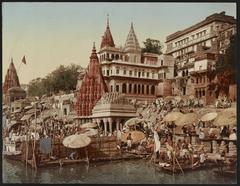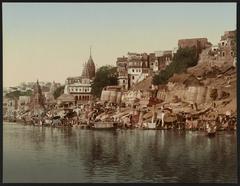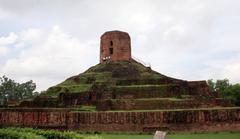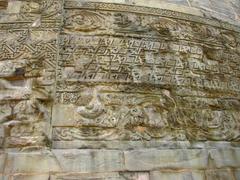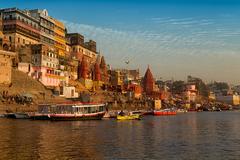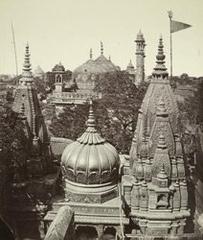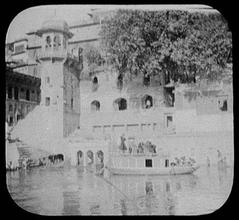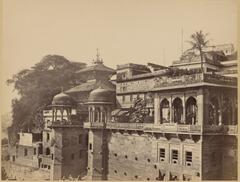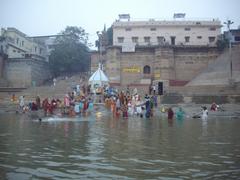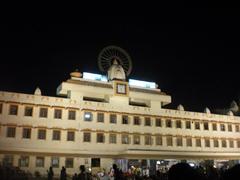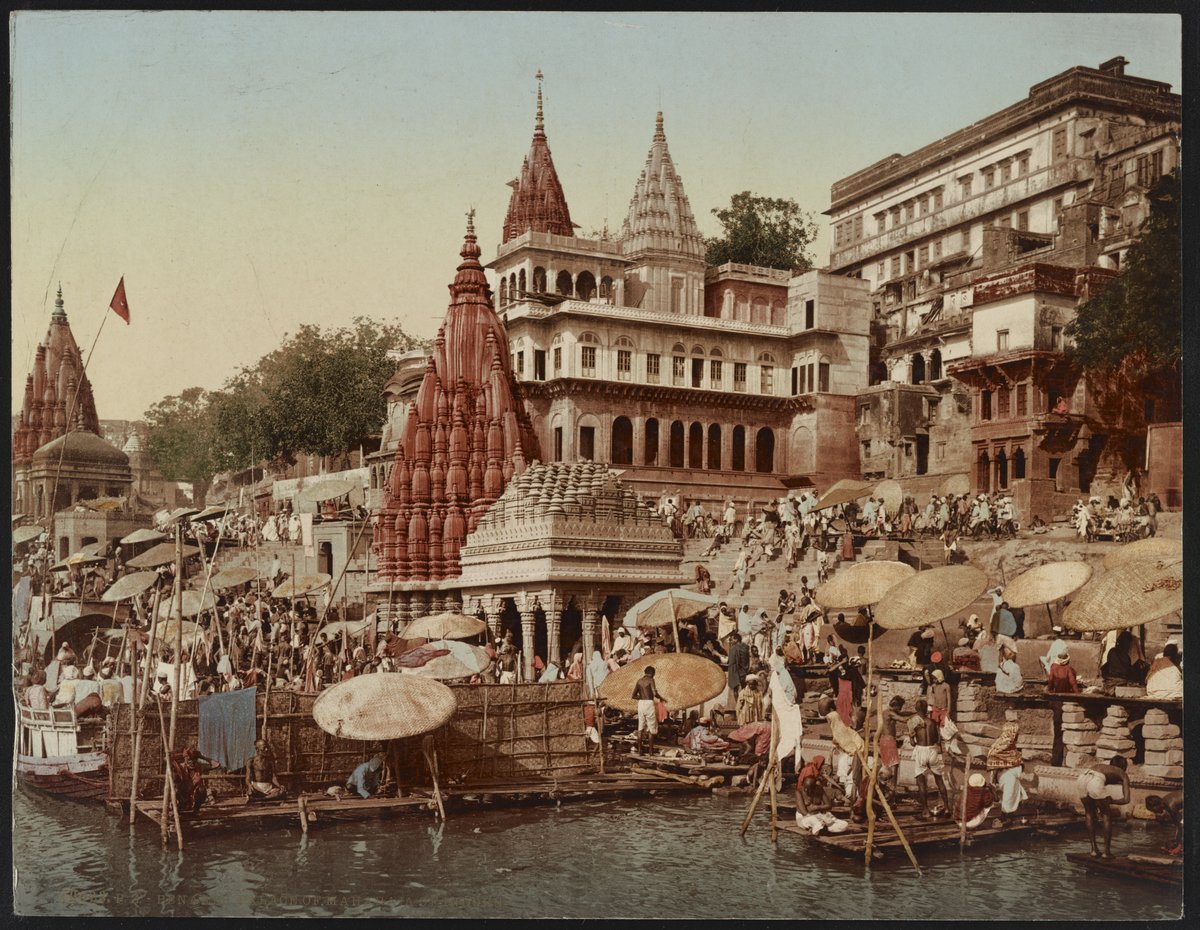
Comprehensive Guide to Visiting Scindia Ghat, Varanasi, India
Publication Date: 24/07/2024
Introduction to Scindia Ghat
Scindia Ghat, an emblematic site nestled along the banks of the sacred Ganges River in Varanasi, India, is a microcosm of the city’s profound spiritual and cultural heritage. Constructed in 1830 by the esteemed Scindia family of the Maratha dynasty, this ghat is not just an architectural marvel but also a significant religious site for Hindus. The ghat’s historical context is intertwined with its mythological importance, being considered the birthplace of Agni, the Hindu God of Fire (Varanasi.org.in). The partially submerged Ratneshwar Shiva Temple, also known as the Leaning Shiva Temple, adds a layer of mystique, symbolizing the architectural challenges faced during its construction (Wikipedia).
Scindia Ghat’s location in Varanasi, one of the world’s oldest continually inhabited cities, makes it an essential destination for those seeking to immerse themselves in India’s spiritual and cultural tapestry. The ghat is a focal point for various religious activities, including sacred baths, rituals, and the mesmerizing Ganga Aarti ceremony. Visitors are drawn to its serene environment, rich history, and the vibrant cultural practices that continue to thrive here. This guide aims to provide a comprehensive overview of Scindia Ghat, including its historical significance, architectural features, visiting tips, and nearby attractions, ensuring a well-rounded and enriching experience for all who visit.
Table of Contents
- Introduction
- Origins and Construction
- Architectural Significance
- Mythological Importance
- Historical Events and Developments
- Cultural and Religious Practices
- Visitor Information
- Preservation and Modern-Day Relevance
- Nearby Attractions
- FAQ
- Conclusion
Origins and Construction
Scindia Ghat, constructed in 1830 by the Scindia family, a prominent Maratha dynasty, stands as a testament to their legacy. Baija Bai, a distinguished member of the Scindia family, played a pivotal role in its establishment (Varanasi.org.in). The ghat’s architecture, approximately 150 years old, reflects the grandeur and style typical of the period.
Architectural Significance
One of the most striking features of Scindia Ghat is the partially submerged Shiva temple, known as the Ratneshwar Shiva Temple or the Leaning Shiva Temple. This temple leans backward and is partially submerged in the Ganges River, symbolizing the architectural challenges faced during its construction. The temple’s submersion is believed to be due to the excessive weight of the ghat’s construction, causing the structure to sink (Wikipedia).
Mythological Importance
Scindia Ghat holds immense mythological significance in Hinduism. According to Hindu mythology, the ghat is the birthplace of Agni, the Hindu God of Fire, adding a layer of spiritual importance. Pilgrims visit the ghat to propitiate Vireshwara, the Lord of all heroes, for blessings, particularly for the birth of a son (Varanasi.org.in).
Historical Events and Developments
Over the years, Scindia Ghat has been a witness to numerous historical events and religious ceremonies, including cremations, a common practice in Varanasi. The ghat’s proximity to Manikarnika Ghat, one of the main cremation ghats in Varanasi, underscores its importance in the city’s spiritual landscape (Wikipedia).
Cultural and Religious Practices
Scindia Ghat is a hub for cultural and religious practices. Known for its peaceful and clean environment, it is a popular spot for early morning meditation. Devotees and tourists alike visit the ghat to take a holy dip in the Ganges River, which is believed to cleanse them of their sins and pave the way for spiritual liberation (Tour My India).
Visitor Information
- Visiting Hours: Scindia Ghat is open 24/7, but early mornings and evenings are ideal for a serene experience.
- Tickets: There are no entrance fees for visiting Scindia Ghat.
- Travel Tips: Wear comfortable footwear and be prepared for a lot of walking. Carry water and be respectful of the local customs and dress modestly.
- Accessibility: The ghat is accessible by foot or boat. Elderly visitors may find the numerous steps challenging.
- Special Events & Guided Tours: The ghat hosts regular religious ceremonies. Guided tours are available for a more in-depth understanding of the ghat’s history and significance.
- Photographic Spots: The Leaning Shiva Temple and the panoramic view of the Ganges River offer excellent photographic opportunities.
Preservation and Modern-Day Relevance
Despite its age and the challenges posed by its partially submerged temple, Scindia Ghat continues to be a significant site. Efforts have been made to preserve the ghat and maintain its cleanliness, ensuring it remains a serene and spiritually enriching location. Its historical and cultural relevance continues to attract tourists from around the world, making it an integral part of Varanasi’s rich heritage (Thrillophilia).
Nearby Attractions
Scindia Ghat is surrounded by several notable ghats and attractions. To the north lies Manikarnika Ghat, known for its cremation ceremonies. Other nearby attractions include Dashashwamedh Ghat, famous for its evening Ganga Aarti ceremony, and the Kashi Vishwanath Temple, one of the most revered temples dedicated to Lord Shiva (Banaras Trip).
FAQ
- What is the best time to visit Scindia Ghat? Early mornings and evenings are the best times to visit for a peaceful experience.
- Is there an entry fee for Scindia Ghat? No, there is no entry fee.
- How can I reach Scindia Ghat? The ghat is accessible by foot or boat. It is advisable to hire a local guide for a more enriching experience.
- Are there any guided tours available? Yes, guided tours are available and highly recommended for first-time visitors.
Conclusion
Scindia Ghat’s rich history, architectural marvels, and spiritual significance make it a must-visit location in Varanasi. Its unique features, such as the partially submerged Shiva temple and its association with Hindu mythology, add to its allure. As a site of both historical and cultural importance, Scindia Ghat continues to draw pilgrims and tourists, offering them a glimpse into the timeless spiritual traditions of Varanasi. For more updates and information, follow us on social media and check out our other related posts.
References
- Varanasi.org.in, n.d., Scindia Ghat
- Wikipedia, n.d., Scindia Ghat
- Thrillophilia, n.d., Scindia Ghat
